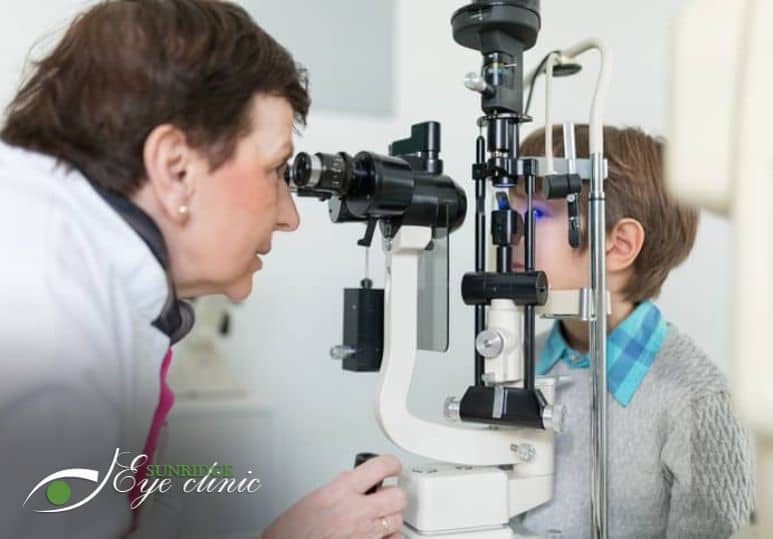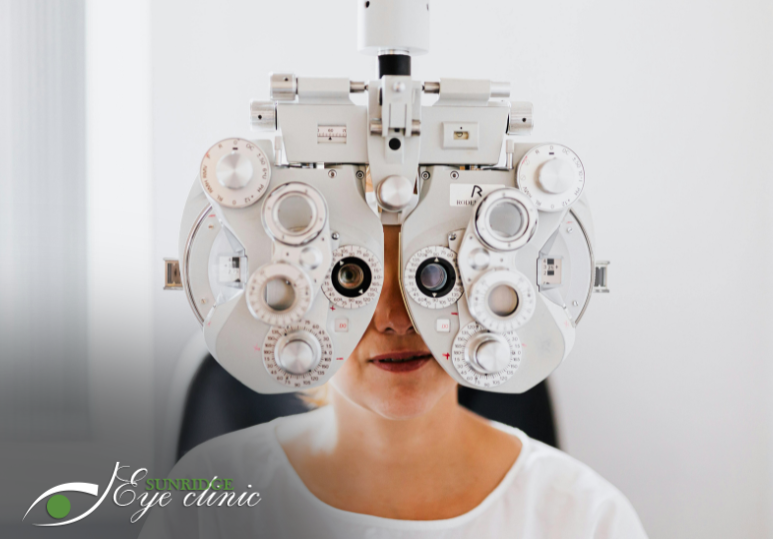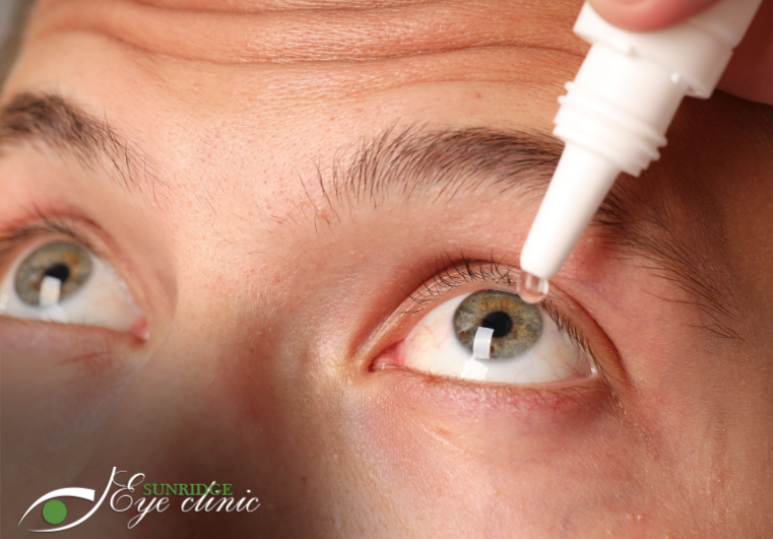Children’s Eye Exams And School
Vision And Learning
It is estimated that 80% of learning is visual. This means that children with undiagnosed visual impairments are missing out on valuable educational opportunities and they may be academically falling behind their peers. When a child is unable to see the board at the front of the classroom or the worksheet in front of them at their desk, they will be unable to answer questions or understand the information in front of them. Some visual impairments cause children to struggle to distinguish shapes, numbers, colours, or other symbols, all of which are the foundations of early learning. If their eye condition is unknown to educators, this can sometimes be perceived as a learning disability or cognitive delay in the child.
Potential Visual Issues
- Refractive Errors: It is increasingly common for children to develop myopia (nearsightedness), although children can also have hyperopia (farsightedness), or astigmatism (difficulty seeing both near and far). Any of these refractive errors can be corrected using eyeglasses.
- Eye Focusing Difficulties: When we look at objects at different distances, our eyes automatically switch focus. When a child has issues with eye focusing, they will not be able to look back and forth between close objects (such as worksheets on their desk) and far objects (such as the board at the front), and they will not be able to fully participate in class.
- Eye Tracking Problems: This is when the eyes are unable to follow movement. This can cause issues with fast-paced sports when the child is unable to follow the speed of a ball, but it can also cause issues within the classroom. When there is an issue with eye tracking, children may struggle to follow words on a page while reading.
- A Lack Of Hand-Eye Coordination: This is when the eyes do not have good visual perception to operate the hands/other parts of the body, which causes a lack of synchronization. A lack of hand-eye coordination can also be caused by a skewed sense of depth perception.
- Eye Teaming Issues: Eye teaming is when both eyes work together. When the eyes are not coordinated, it can create issues such as double vision and a lack of depth perception. Children with poor eye teaming will likely struggle to read and participate in sports and games.
Vision And Other Symptoms
If your child has an undiagnosed eye condition, it can cause other symptoms. If your child can’t see clearly, they will unconsciously focus their eyes, which can cause eye strain. This eye strain can lead to headaches and eye fatigue that may make your child cranky and frustrated. Other eye conditions may cause dizziness or vertigo, a lack of balance, regular tripping, or bumping into objects.
Visual impairment can also cause children great emotional distress. When their visual issues are causing them to fall behind in school or limiting their ability to participate in sports or recess activities, they may feel frustrated that they cannot participate like their peers. Visual impairments can leave children feeling isolated and either angry or sad at their own perceived shortcomings. Suffering from physical symptoms such as headaches can also worsen their mood. As they become more frustrated with learning, they will begin to associate school with unpleasant feelings and sensations from an early age and may resent learning.
Schedule A Children’s Eye Exam Before School Starts
Whether your child is going to school for the very first time or they’re going back, it’s time for a children’s eye exam. Ensuring your child’s prescription is up to date and that any eye conditions are detected and addressed is vital for both the eye health of your child and for their academic success. To schedule a children’s eye exam with a family eye doctor, contact Sunridge Eye Clinic in NE Calgary by calling 1-403-280-7518 or fill out the online contact form. The staff at Sunridge Eye Clinic is committed to offering comprehensive eye care and educating families about programs that make eye care affordable and accessible for Alberta families so every child can thrive both in school and out.
FAQ
Q: When should children visit the eye doctor for an eye exam?
A: Children should visit the eye doctor at 6 months old, 3 years old, 5 years old, and then every year after that until they are 18. Learn why children should get eye exams at these ages by reading Children’s Eye Health And Safety Month: The Recommended Schedule Of Children’s Eye Exams.
Q: How much do children’s eye exams cost?
A: Alberta Health Care Insurance Plan covers all comprehensive annual eye exams for children aged 0-18 and for adults aged 65+. The AHCIP also provides coverage for all emergency visits to the eye doctor.
Q: What if I can’t afford eyeglasses for my children?
A: To help make eye care affordable for all, Sunridge Eye Clinic is a part of the EYE SEE… EYE LEARN (ESEL) program. If your kindergarten-aged child has been seen by a doctor of optometry and requires eyeglasses, ESEL provides a free pair. Contact Sunridge Eye Clinic if you would like to participate in the ESEL program; no applications are necessary.






